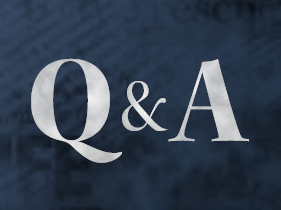THE QUESTION:
What was the ancient Didache and what is its relevance today?
THE RELIGION GUY’S ANSWER:
Except for the Bible or Quran, ancient writings rarely pop up in 21st Century public disputes. So it was rather interesting to see that happen with the Didache, whose importance rests on its likely status as the oldest surviving text from Christianity’s earliest days other than the New Testament itself. Certain scholars think it was written even before the Gospels, between A.D. 50 and 70, but more common dating puts it in the early 2nd Century A.D.
This text’s sudden media appearance involved the unending abortion debate, which is hotter than ever in the U.S. with the Supreme Court set to re-examine the law next term in the Dobbs case and the Catholic bishops’ conference considering whether to endorse denial of Communion to “pro-choice” office-holders, President Biden included.
Garry Wills, the Northwestern University historian and renegade Catholic, recently sought to convince New York Times readers that “the cult of the fetus” embraced by Catholic bishops (also evangelical Protestants) is off-base because, among other things, Jesus and the New Testament authors never condemn abortion as sinful.
A blistering response by National Review‘s Michael Brendan Dougherty cited the Didache as prime evidence in contending that Christianity from its earliest phase opposed abortion. The document’s second chapter forbids “grave sins,” listed as follows:
“You shall not commit murder, you shall not commit adultery, you shall not commit pederasty, you shall not commit fornication, you shall not steal, you shall not practice magic, you shall not practice witchcraft, you shall not murder a child by abortion nor kill that which is born. You shall not covet the things of your neighbor, you shall not swear, you shall not bear false witness, you shall not speak evil, you shall bear no grudge . . . (Roberts-Donaldson translation).
A later section targets “murderers of children, destroyers of the handiwork of God” in a catalogue of people who are living out “the way of death.”
That contrasted with the surrounding morality of pagan Greece and Rome. Abortion and infanticide were subsequently decried by array of foundational figures like Ambrose, Athenagoras, Augustine, Barnabas, Chrysostom, Clement, Jerome and Tertullian. Law professor and federal judge John Noonan Jr. (cited by Wills on one point) summarized that Christian opposition to abortion has been “an almost absolute value in history.”
The Didache (Greek for “teaching” or “training,” pronounced “Did-ah-kay”) is a manual on morals and church life with a concluding vision of Jesus Christ’s Second Coming that runs 3,000 words, about the same length as the Sermon on the Mount. You can easily read it for yourself in one sitting. (Yet the Didache commentary by Aaron Milavec, a proponent of 50 – 70 dating, runs 984 pages!)
Because the Didache contains no doctrine on the person and work of Jesus Christ, some theorize that it was partly a Jewish ethical manual that Christians adopted and added the material on church matters.
It provides an important glimpse from Christianity’s earliest period of formation and thus has prime historical importance. Neither the author(s) nor the place of origin are named. The work is subtitled the “teaching of the Lord through the twelve apostles, to the Gentiles,” indicating it was compiled by Jewish Christians to train non-Jewish converts. Certain ancients revered it so much they thought it should be considered Scripture, but it’s unclear whether the document was widely used and recognized across early Christianity or only by limited groups.
Though the work’s existence was well-attested in ancient times, the actual full text was lost until its rediscovery by Greek Orthodox Metropolitan Philotheos Bryennios in 1873 in the Monastery of the Holy Sepulcher in Constantinople (Istanbul) and published by him in 1883. The first English translation appeared in 1884.
Here are a few details on the church the Didache depicts.
CONTINUE READING: “What was the ancient ‘Didache’? What is its relevance today?”, by Richard Ostling.










